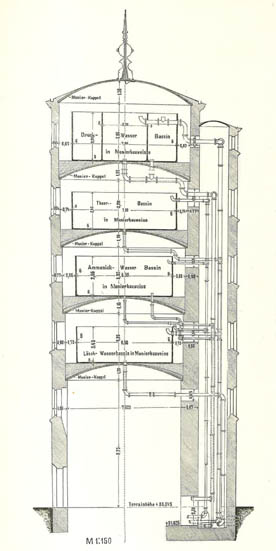Early reinforced concrete structures in Berlin, 1885–1918

In 1871, Berlin became the capital of the German Empire and the seat of government of the German Emperor. In the following decades, the number of inhabitants tripled and new businesses and factories were established. Up until the late 19th century Berlin was developing into the largest industrial centre in continental Europe, with numerous new building projects to carry out. Contemporaneous to this was the development of reinforced concrete, which had already begun around 1850. The new building material offered numerous applications especially suited to the requirements of Berlins’ construction projects. The first evidence of this dates to 1884, with the Berlin Reichstag as the most famous example.
The development of reinforced concrete has been discussed from various points of view on numerous occasions in publications. The thesis will draw on this content with the focus limited to the urban environment of greater Berlin. The localised confines represent an interesting dynamic field, as it was in Berlin that cooperative work in the implementation of new construction methods in civil engineering and science resulted in the development of new approaches. Through a clever use of patents and centralised management, G. A. Wayss together with M. Koenen were able to establish reinforced concrete construction in Berlin relatively early. As a result of this cooperation, fundamental scientific tests were carried out, for example on the characteristics and behaviour of construction material, which lead to more accurate measurement.
The first chapter of the thesis will provide a general historical background, with a more detailed focus on teaching, knowledge of building materials and approaches to measurement. The second chapter will concentrate on Berlin, explaining prevailing regulations and economic constraints and analysing and evaluating the resulting influences on the development of construction. The historical civil engineering development of reinforced concrete will then be subject to a comparative analysis of selected objects (compiled in a building catalogue). The analysis will be based on researching the building history of the objects as well as on additional in situ investigations of existing fabric. Overall, the framework of the analysis will consist of issues of knowledge and technology transfer from different countries, the interface between educational institutions, management and construction companies and the identification of a place-specific local design language within the framework of the analysis.
The dissertation was published in 2021 with Fraunhofer IRB Verlag, Stuttgart under the title "Frühe Eisenbetonkonstruktionen in Berlin, 1880–1918".
Researcher: Sabine Kuban
